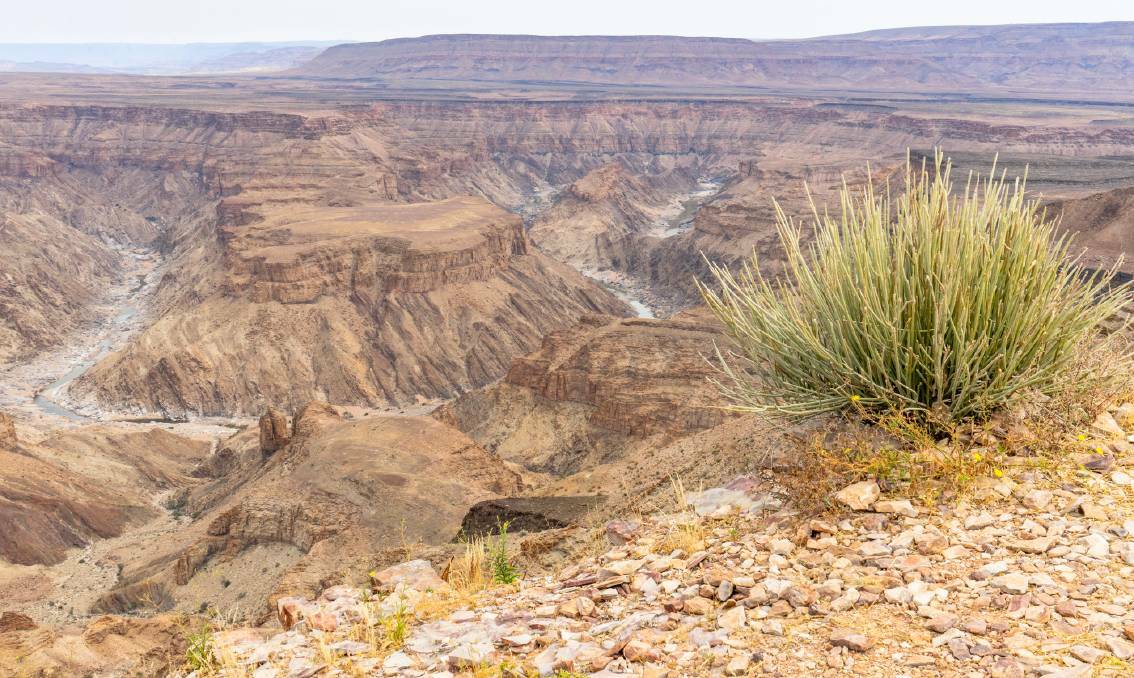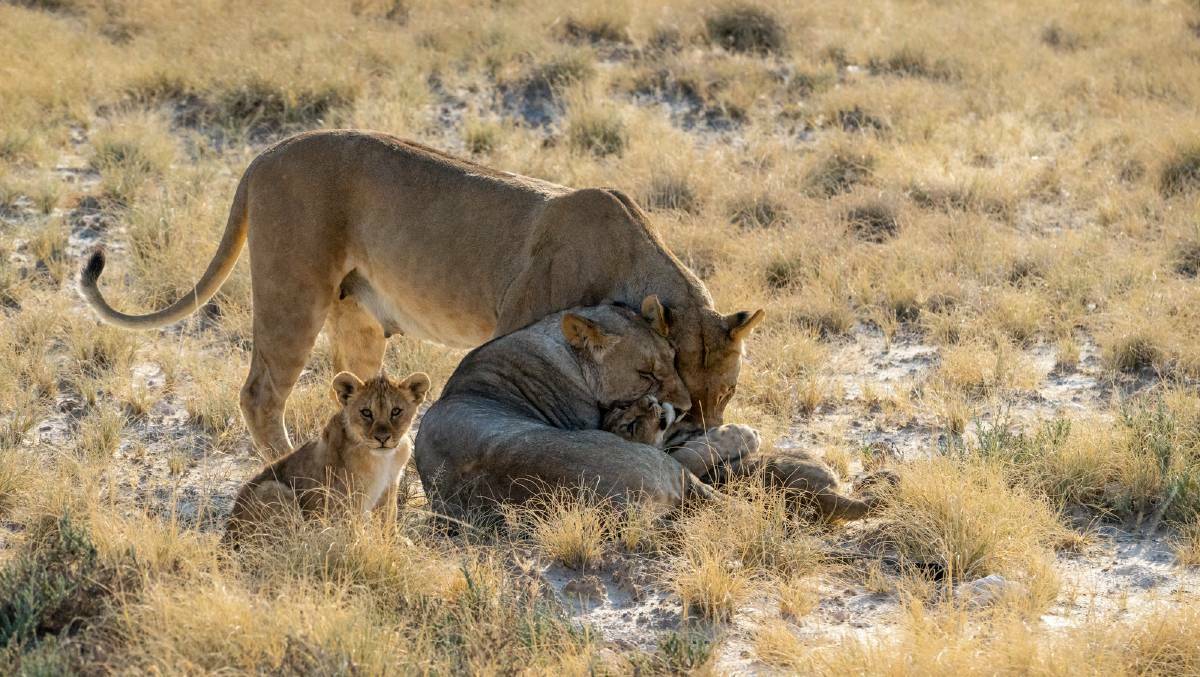There’s a slight stinging on my legs, exposed below my shorts, as the wind hits them with full force. I’ve turned my face away from the gusts and I’m trudging uphill regardless. The strength of the wind is making the climb up this dune hard enough, but the added difficulty is coming from all the tiny sand particles that are being picked up and slammed into me at gale force speed.
Create a free account to read this article
$0/
(min cost $0)
or signup to continue reading
I wonder if there’s more sand in the wind than in the dune beneath me – and that’s saying something, seeing as the dune is 85 metres high. I glance back down the trail of footsteps that curve along the ridge of the sandy hill to the ground. It looks like the spine of a giant red dinosaur. One that’s taken me about half-an-hour to walk up.
This is Sossusvlei in Namibia, probably the easiest part of the enormous Namib Sand Sea to access (climbing conditions excepted). The red and orange dunes here roll on as far as you can see, stretching out for about 400 kilometres in total. From the top of this one, which I do eventually reach, I look out at just a small fraction of one of Africa’s natural wonders.
Experts think the Namib Sand Sea is probably the oldest desert in the world. It’s one of Namibia’s biggest national parks and one of only two World Heritage Sites in the country. So, it’s no surprise that the area is well protected, and I think the local authorities should be commended for the way they’ve managed tourism in a way that is sustainable and accessible. It’s forbidden to climb most of the sand dunes but the one I struggle up – Dune 45 – has been set aside for visitors to experience. Some other parts of the Sossusvlei area can only be reached by 4WD and the rangers drive tourists in and out to reduce damage to the environment.

Even the highlight of this region, Deadvlei, is still inaccessible by road and requires a 20-minute walk through the desert. It’s worth it to experience the eerie landscape of skeleton-like trees that died more than 700 years ago but have been preserved by the dry air and blackened by the sun, sitting in the bright white clay pan and surrounded by a background of red dunes.
Namibia stuns with its natural offerings and another of its most spectacular is Etosha National Park. Perhaps this is not the first place you would think of for an African safari but, as it turns out, it deserves a spot among the best. My first morning in the park, we drive out and find a pride of lions: about half a dozen female adults and two cubs. We sit and watch the youngsters play – rolling around, pretending to bite, pouncing like kittens. Their mother and the other lionesses are also watching them closely, but with half an eye on us … just in case.

What makes Etosha National Park so special is its lack of thick foliage. It’s hard for the animals to hide and you can easily spot them in the distance. The large herd of elephants lumbering towards the waterhole; the zebras running across the plain in the hundreds; the cautious giraffes craning their long necks to look for predators; and even the black rhino that bullies its way through the other species, seemingly unaware of its critically-endangered status.
Who knew that this gem of a safari experience existed here? I certainly didn’t. Namibia has only recently become a more popular destination for travel in Africa and it seems tourists are constantly discovering these new sights for themselves.

Like Fish River Canyon, for instance. It’s the largest canyon in Africa and, by some definitions, the second largest in the world. 160 kilometres long, up to 27 kilometres wide, and as much as 500 metres deep in some parts. You can admire its grand proportions from above – locals say it looks like a snake slithering through the rocky red and dry purple landscape. Or, for the more adventurous, there is a 90-kilometre hiking trail that goes along the river at the bottom of the canyon that most walkers take five days to do. (I’ve added a mental note to come back and do it one day).

There’s also Swakopmund, a coastal city where the sand dunes are replaced by sandy beaches, the closest that Namibia comes to having a ”tourist town”. It is popular with Europeans because it was once a German colony and the town is still full of heritage architecture and business names from that time. While some visitors choose to just relax here, there are also lots of activities like sand boarding, skydiving, mountain biking, and kayaking. I decide to head out on a boat trip to visit a large colony of 100,000 seals, with the bonus of some dolphins joining us some of the way. At the right time of year, you would also be able to spot humpback and southern right whales.
What you won’t spot are many other tourists – especially not Australians. I suspect that the African countries further north have better-developed tourism industries partly because of their proximity to the European markets. For us, though, Namibia is just as easy to visit with a simple transit through South Africa. There’s probably never been a better time to go.




